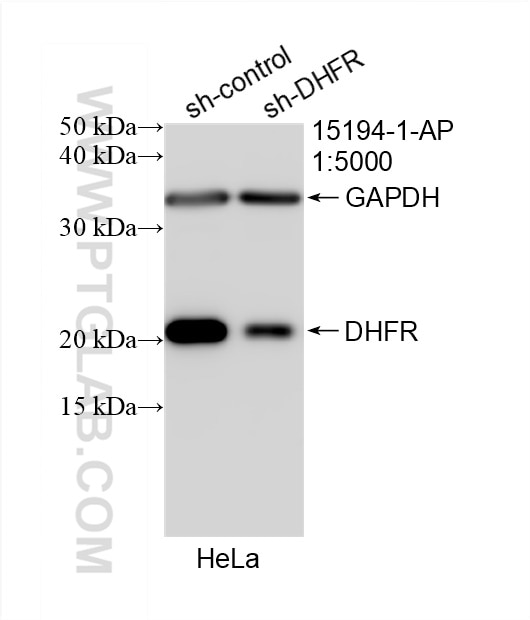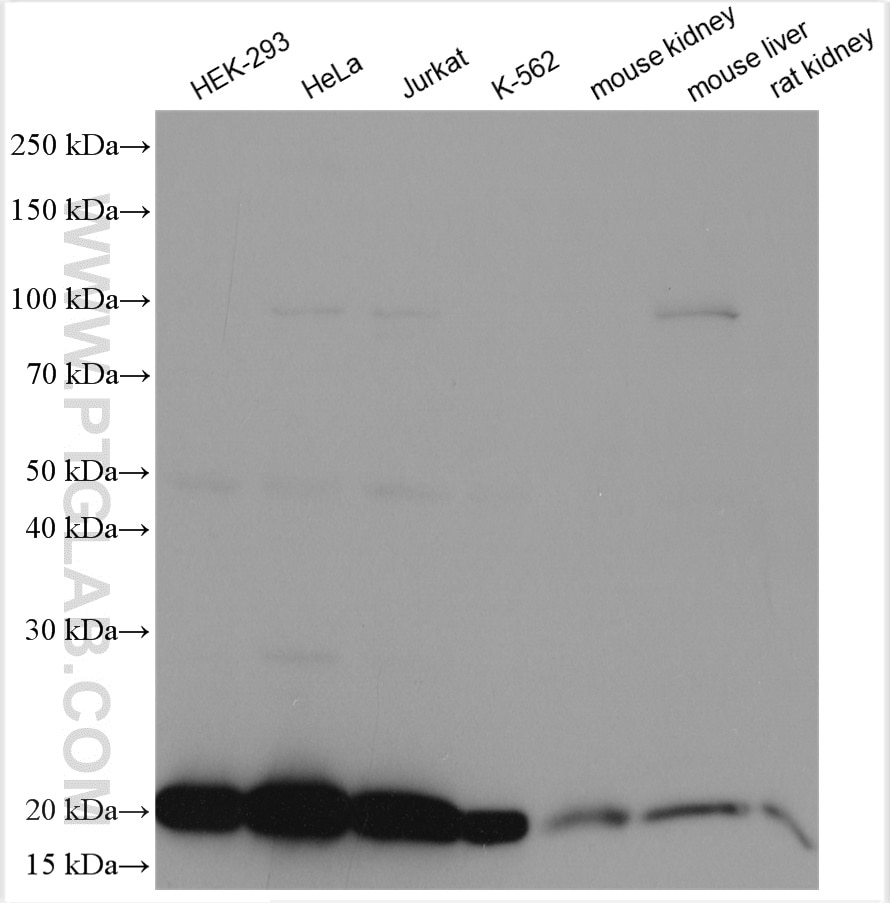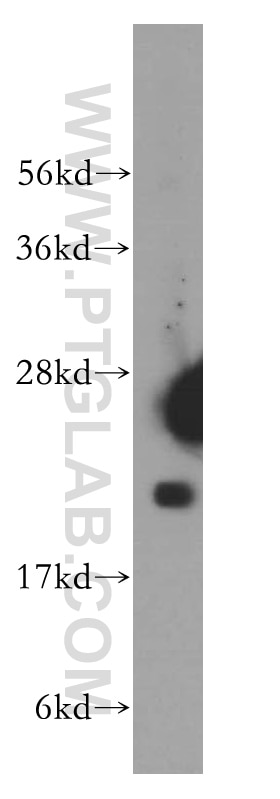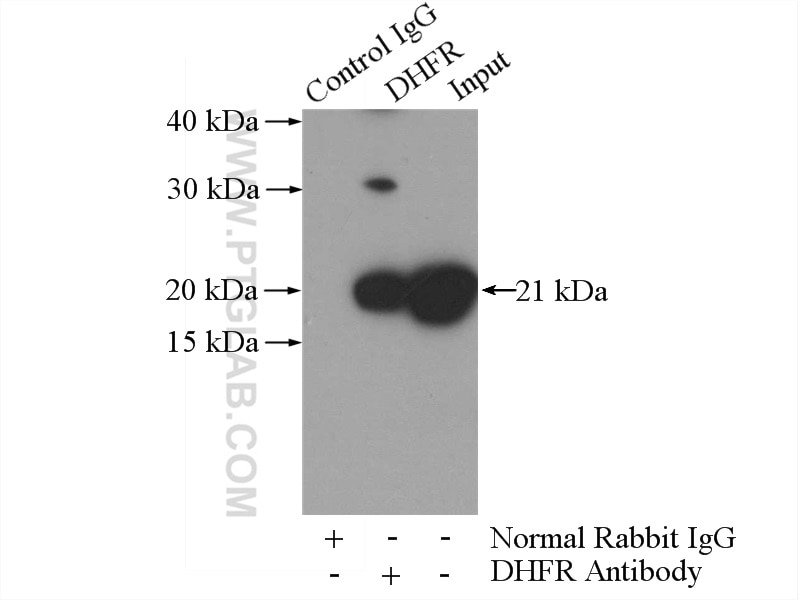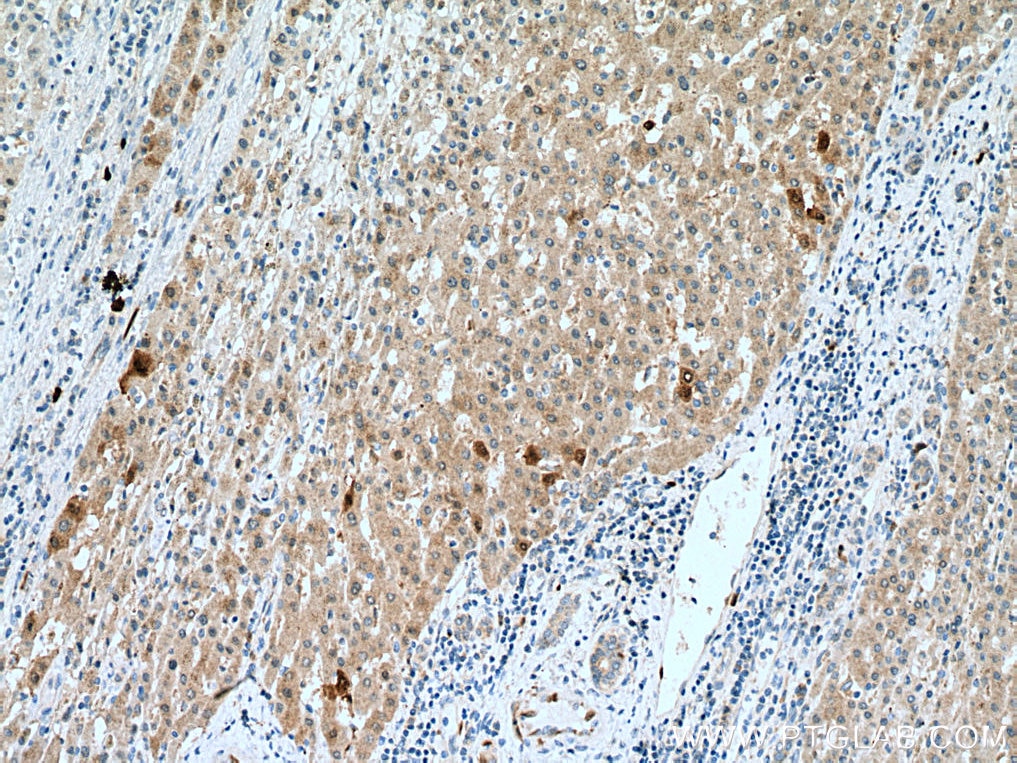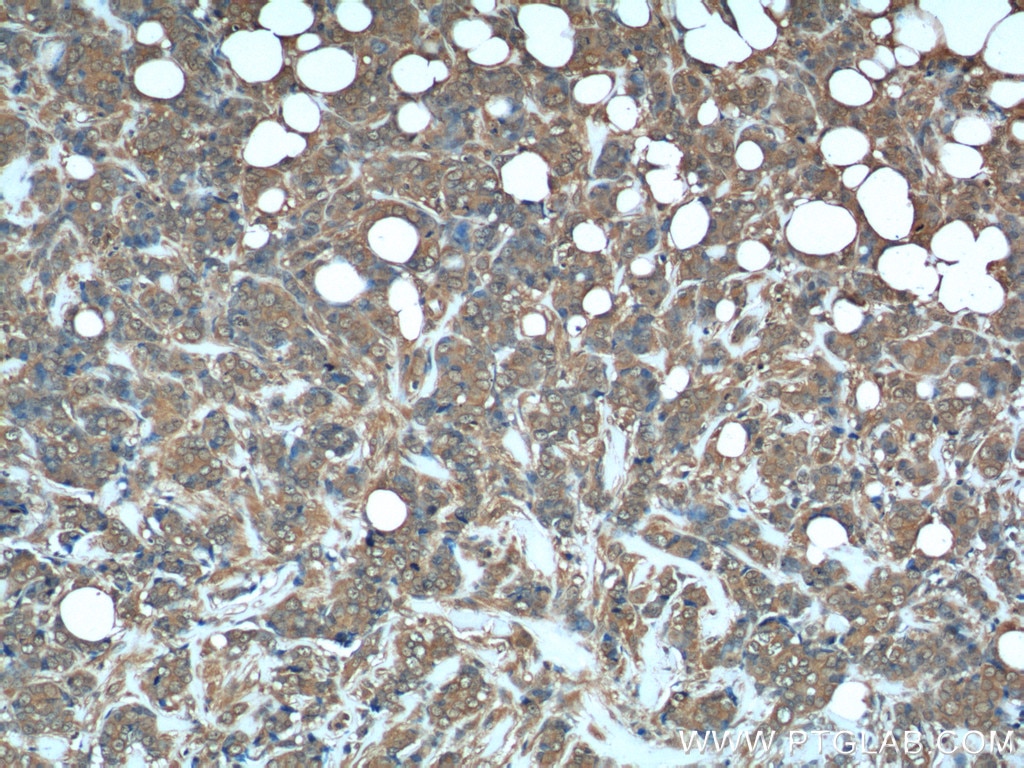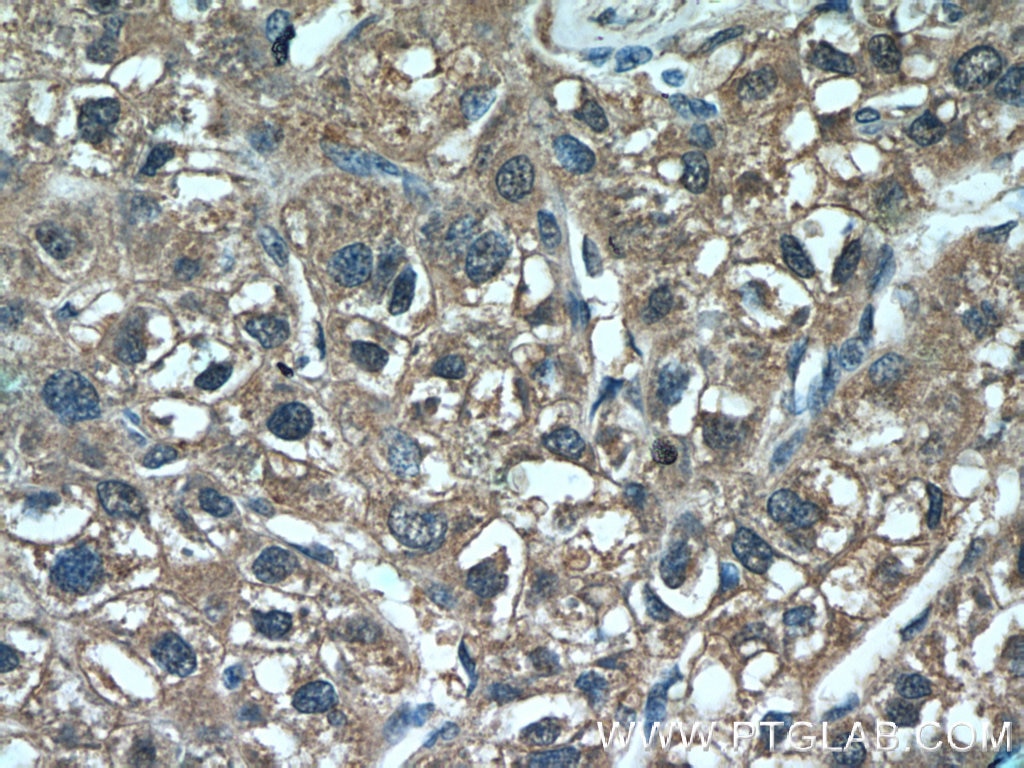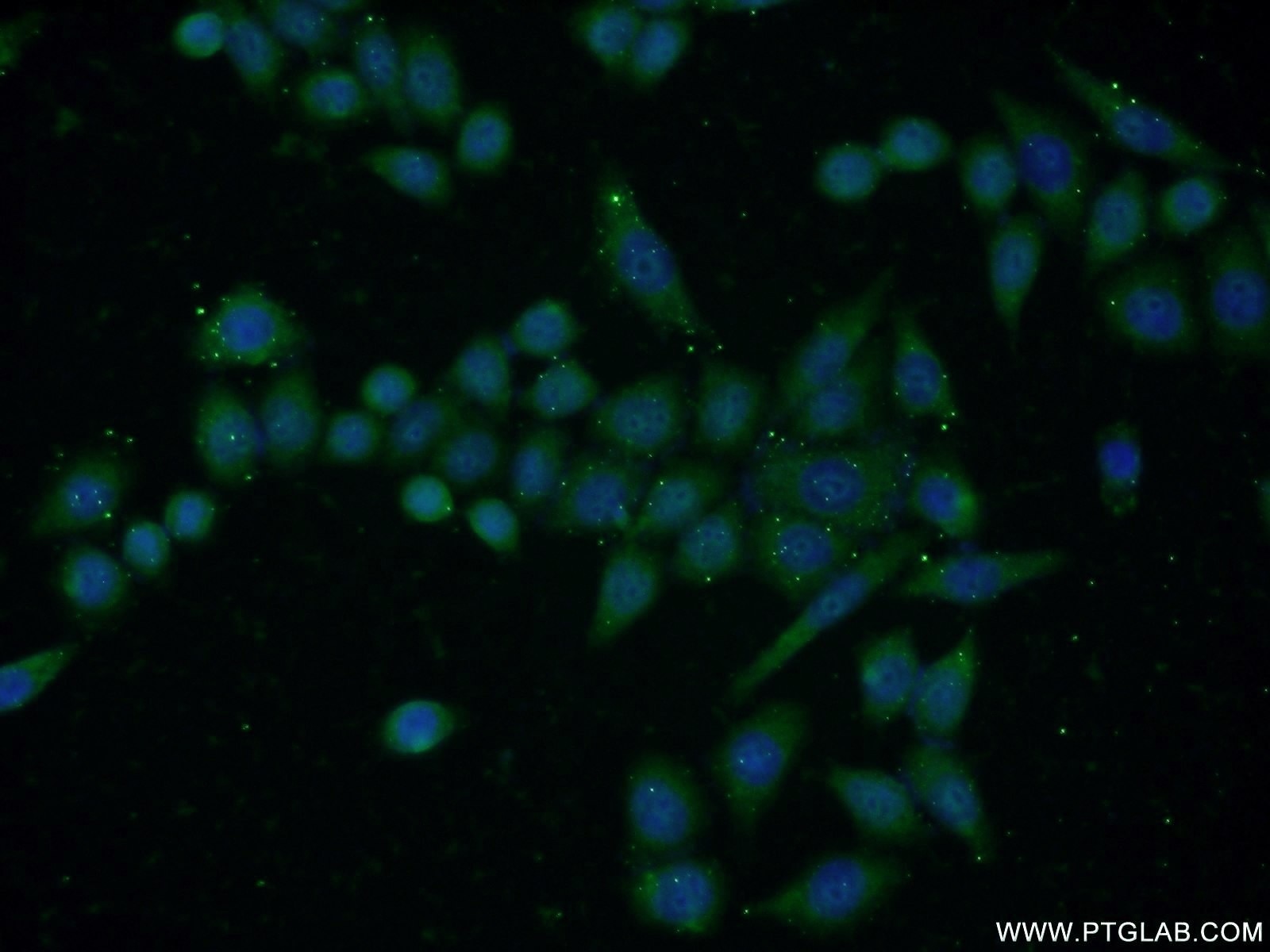- Phare
- Validé par KD/KO
Anticorps Polyclonal de lapin anti-DHFR
DHFR Polyclonal Antibody for WB, IHC, IF/ICC, IP, ELISA
Hôte / Isotype
Lapin / IgG
Réactivité testée
Humain, rat, souris et plus (1)
Applications
WB, IHC, IF/ICC, IP, ELISA
Conjugaison
Non conjugué
N° de cat : 15194-1-AP
Synonymes
Galerie de données de validation
Applications testées
| Résultats positifs en WB | cellules HEK-293, cellules HeLa, cellules Jurkat, cellules K-562, cellules Raji, tissu hépatique de souris, tissu rénal de rat, tissu rénal de souris |
| Résultats positifs en IP | cellules Raji |
| Résultats positifs en IHC | tissu de cancer du foie humain, tissu de cancer du sein humain il est suggéré de démasquer l'antigène avec un tampon de TE buffer pH 9.0; (*) À défaut, 'le démasquage de l'antigène peut être 'effectué avec un tampon citrate pH 6,0. |
| Résultats positifs en IF/ICC | cellules HeLa |
Dilution recommandée
| Application | Dilution |
|---|---|
| Western Blot (WB) | WB : 1:1000-1:6000 |
| Immunoprécipitation (IP) | IP : 0.5-4.0 ug for 1.0-3.0 mg of total protein lysate |
| Immunohistochimie (IHC) | IHC : 1:50-1:500 |
| Immunofluorescence (IF)/ICC | IF/ICC : 1:20-1:200 |
| It is recommended that this reagent should be titrated in each testing system to obtain optimal results. | |
| Sample-dependent, check data in validation data gallery | |
Applications publiées
| KD/KO | See 4 publications below |
| WB | See 17 publications below |
| IF | See 3 publications below |
Informations sur le produit
15194-1-AP cible DHFR dans les applications de WB, IHC, IF/ICC, IP, ELISA et montre une réactivité avec des échantillons Humain, rat, souris
| Réactivité | Humain, rat, souris |
| Réactivité citée | Humain, poisson-zèbre, souris |
| Hôte / Isotype | Lapin / IgG |
| Clonalité | Polyclonal |
| Type | Anticorps |
| Immunogène | DHFR Protéine recombinante Ag7331 |
| Nom complet | dihydrofolate reductase |
| Masse moléculaire calculée | 21 kDa |
| Poids moléculaire observé | 21 kDa |
| Numéro d’acquisition GenBank | BC000192 |
| Symbole du gène | DHFR |
| Identification du gène (NCBI) | 1719 |
| Conjugaison | Non conjugué |
| Forme | Liquide |
| Méthode de purification | Purification par affinité contre l'antigène |
| Tampon de stockage | PBS with 0.02% sodium azide and 50% glycerol |
| Conditions de stockage | Stocker à -20°C. Stable pendant un an après l'expédition. L'aliquotage n'est pas nécessaire pour le stockage à -20oC Les 20ul contiennent 0,1% de BSA. |
Informations générales
DHFR (dihydrofolate reductase) catalyzes the subsequent NADPH-dependent reduction of the H2folate produced by TS to regenerate the tetrahydrofolate (H4folate) necessary for continued dTMP synthesis and transfer of 1-carbon units (PMID:3461439). It belongs to the dihydrofolate reductase family and can exist as a homodimer (PMID:2248959). DHFR is widely expressed in fetal and adult human brain and whole blood, expression is higher in adult brain than fetal brain (PMID:21310276).
Protocole
| Product Specific Protocols | |
|---|---|
| WB protocol for DHFR antibody 15194-1-AP | Download protocol |
| IHC protocol for DHFR antibody 15194-1-AP | Download protocol |
| IF protocol for DHFR antibody 15194-1-AP | Download protocol |
| IP protocol for DHFR antibody 15194-1-AP | Download protocol |
| Standard Protocols | |
|---|---|
| Click here to view our Standard Protocols |
Publications
| Species | Application | Title |
|---|---|---|
Mol Cell mTORC1 stimulates cell growth through SAM synthesis and m6A mRNA-dependent control of protein synthesis. | ||
Am J Hum Genet Identification and characterization of an inborn error of metabolism caused by dihydrofolate reductase deficiency. | ||
Food Funct The protective effect of polyunsaturated fatty acid intake during pregnancy against embryotoxicity of sodium valproate in mice | ||
Cancer Sci Thymidylate synthase inhibitor raltitrexed can induce high levels of DNA damage in MYCN-amplified neuroblastoma cells. | ||
